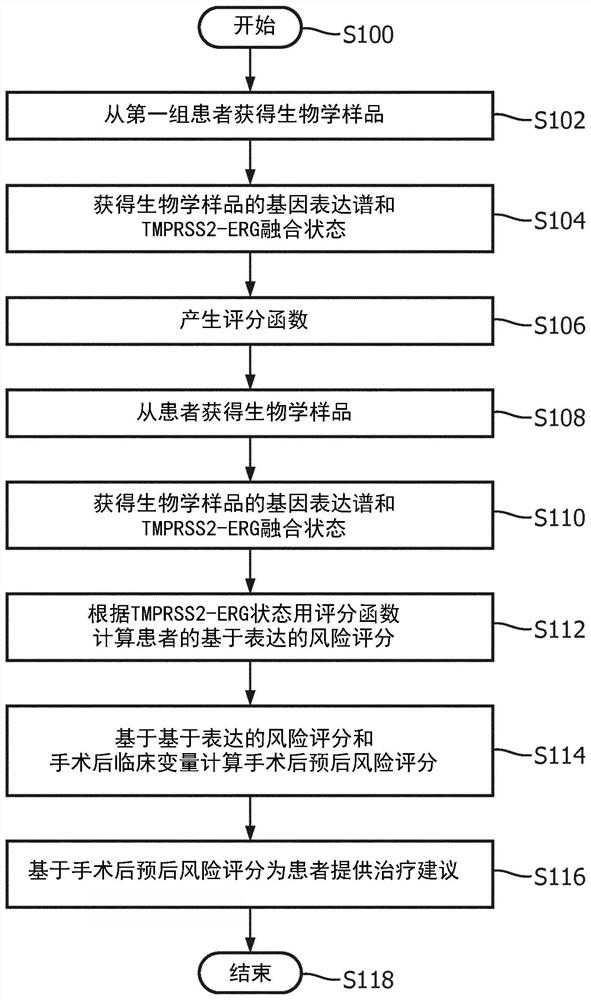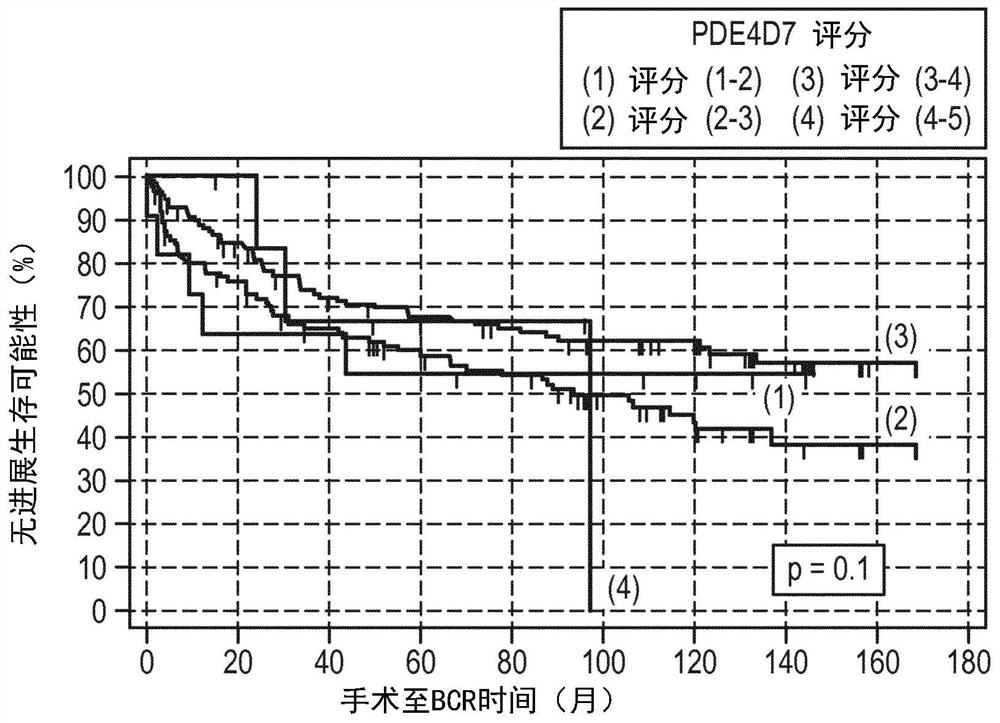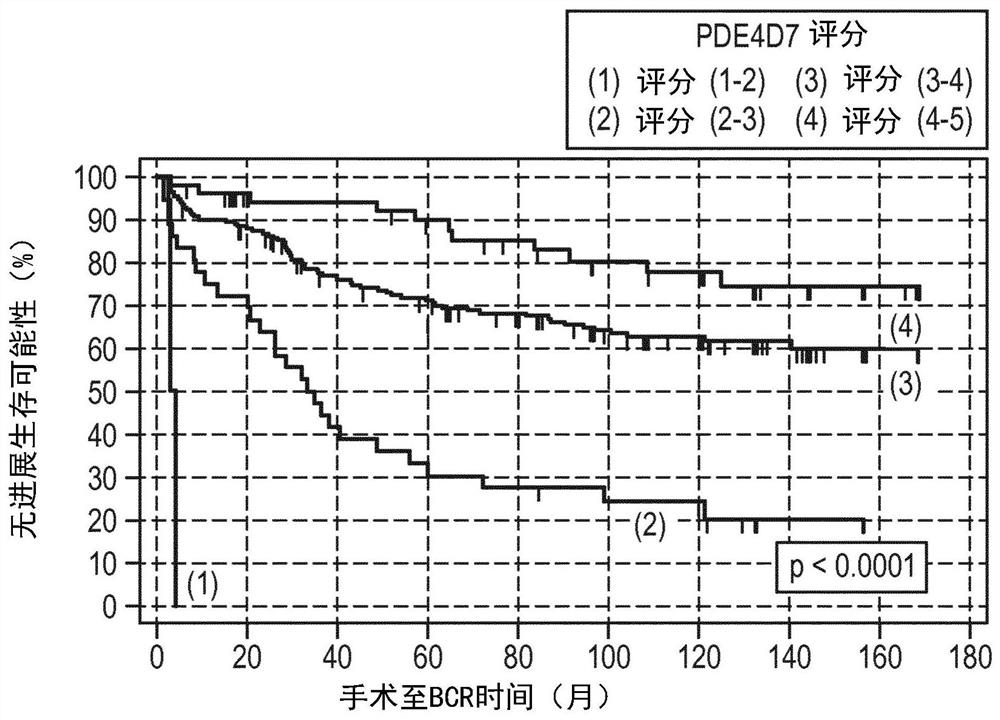Post-surgical risk stratification based on pde4d variant expression, selected according to tmprss2-erg fusion status, and post-surgical clinical variables
A risk stratification, post-operative technique, applied in the fields of biochemical equipment and methods, microbial assay/test, etc., which can solve problems such as side effects
- Summary
- Abstract
- Description
- Claims
- Application Information
AI Technical Summary
Problems solved by technology
Method used
Image
Examples
Embodiment
[0147] Patient Cohorts and Samples
[0148] A cohort of radical prostatectomy (RP) patients was used, whose demographic data are shown in Table 2. A small forceps biopsy sample (approximately 1 mm × 2 mm) representative of the tumor area was collected from the resected prostate from 656 patients who were operated on consecutively between 2000 and 2004 at a large clinical center in Germany . Of the 656 patients, 600 were selected for RNA next-generation sequencing based on the quality and concentration of RNA in the samples after nucleic acid extraction. After quality control of the RNAseq data, 575 patient samples were found to be eligible for statistical analysis.
[0149] Table 2: Demographics of the Radical Prostatectomy (RP) Patient Cohort
[0150]
[0151] Patient age, preoperative PSA, percentage tumor in biopsy, prostate volume, and PSA density are shown in the table, with minimum and maximum values in the cohort, and medians are shown in parentheses. For CAPRA-S...
PUM
 Login to View More
Login to View More Abstract
Description
Claims
Application Information
 Login to View More
Login to View More - R&D
- Intellectual Property
- Life Sciences
- Materials
- Tech Scout
- Unparalleled Data Quality
- Higher Quality Content
- 60% Fewer Hallucinations
Browse by: Latest US Patents, China's latest patents, Technical Efficacy Thesaurus, Application Domain, Technology Topic, Popular Technical Reports.
© 2025 PatSnap. All rights reserved.Legal|Privacy policy|Modern Slavery Act Transparency Statement|Sitemap|About US| Contact US: help@patsnap.com



